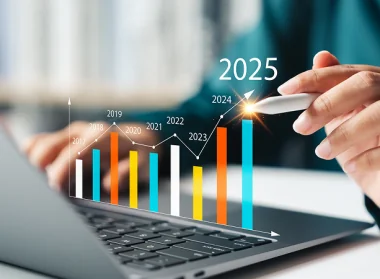For companies around the world, the era of digital disruption has created a need to capture, analyze, and leverage insights generated by the massive amounts of data created in the course of doing business.
And in this brave new world of big data, procurement—which generates a veritable sea of data affecting every area of business—offers a special opportunity to harvest actionable insights that lead directly to significant cost savings, process improvements, and improved decision making not just for procurement organizations, but companies as a whole.
The use of procurement analytics can yield substantial rewards for companies who understand their power, and apply the insights it offers strategically.
What are Procurement Analytics?
When procurement teams collect and analyze the data generated by procurement processes to generate useful insights that support process optimization and improved decision making, they’re using procurement analytics.
These analyses can be as simple as a spreadsheet for basic spend analysis or as advanced as predictive analytics used to incorporate market and supply chain data into purchase order workflows to ensure contract compliance and optimal pricing.
Generally speaking, procurement analytics draw on multiple, internal and external sources of both structured and unstructured (raw) data.
Like ore shipped to a refinery, the data is sorted, classified, and then processed to make it as easy as possible to access, view, and put to work to provide business intelligence insights.
- Internal data sources include supplier-side data, transactional data (including information from enterprise resource planning (ERP) and accounting software), and localized tactical data collected from (for example) the general ledger or sales and marketing data shared in spreadsheets by other business units.
- External data sources include public data (including social media), market intelligence, currency and stock market information, and supplier data. In addition, companies may draw on industry-specific information, such as supplier codes, credit reports, risk exposure profiles, and market indexes to provide additional context and help reveal trends and opportunities.
Procurement analytics are one of a growing number of advanced technological tools—they’re often supported within the eProcurement space by artificial intelligence, process automation, and collaboration-friendly cloud-based data management—used to transform big data into discrete data sets.
Searchable, organized, and comprehensive data can be viewed, analyzed, and further refined to provide cost savings, value, and improved competitive advantage much more easily than a monolithic mass of unstructured data ever could be.
Four varieties of data analytics drive procurement analytics. They are, in order of increasing complexity:
- Descriptive Analytics: Procurement data is analyzed and used to describe past events.
- Diagnostic Analytics: Procurement data is used to pinpoint the causes of past events.
- Predictive Analytics: Market trends and patterns revealed by analysis of existing procurement data are used to create forecasts of potential future outcomes.
- Prescriptive Analytics: Decision making is supported by predictive models built from procurement data.
Traditionally, spend analysis has been the core driver of procurement analytics, but thanks to the evolving sophistication of eProcurement software solutions, procurement leaders are looking to more advanced prescriptive models created with help from artificial intelligence and automated, data-driven processes.
The days of spend analysis as the far border of analytics in procurement are long past. Because they give procurement teams access to, and total control over, the data sets created by procurement processes, procurement analytics can be used to enhance all areas of procurement and extend core benefits such as continuous process improvement to the rest of the business units in an organization.
Procurement Analytics Examples
While no two organizations will have identical procurement goals or processes, most use some or all of the most common applications supported by procurement analytics, including:
- Spend Analytics: Processes spend data collected from various internal and external sources to guide spend management.
- Contract Analytics: Analysis of supplier contracts and associated meta-data, including terms, conditions, pricing, etc.
- Contract Compliance: Uses contract analysis data to enforce compliance with special terms, conditions, and pricing. Reduces rogue spend by increasing transparency and enforcing compliance.
- Purchase Order Compliance: Reduces rogue spend. Improves compliance and approval workflows. Reduces fluctuation in pricing by ensuring consistent compliance with both internal processes (e.g., “No PO, no pay”) and contract terms.
- Invoicing Compliance: Similar to purchase order compliance. Reduces or eliminates invoice fraud and theft by enforcing transparency, accountability, automation, and compliance with internal processes. Supports faster and more accurate three-way matching to ensure timely payment and capture of more discounts with fewer fees.
- Savings Lifecycle Analytics: Analysis of the efficacy and efficiency of special projects created to achieve cost savings.
- Supply Chain Analytics: Analysis and comparison of the compliance and performance data for vendors.
- Vendor Compliance: Detects and reduces rogue spend by revealing unauthorized spend with unapproved vendors. Ensures accuracy and completeness of supplier data. Uses supply chain analytics to support strategic and responsible sourcing through removal of redundant, non-compliant, and high-risk vendors.
- Forecasting: Predictive models used to determine future spending trends and their impact on a company’s bottom line.
- Benchmarking: Using key performance indicators (KPIs) to monitor and evaluate performance and compliance. KPIs can be established for internal processes, vendor performance and compliance, or organizational performance in the marketplace.
The Growing Importance of Procurement Analytics
The days of spend analysis as the far border of analytics in procurement are long past.
Because they give procurement teams access to, and total control over, the data sets created by procurement processes, procurement analytics can be used to enhance all areas of procurement and extend core benefits such as continuous process improvement to the rest of the business units in an organization.
The impartiality and raw power of advanced data analytics makes it easier to obtain actionable, unbiased insights in real time.
Procurement analytics can, with artificial intelligence, parse, categorize, and evaluate the connections between countless data sets at a pace far faster than any manual process could hope to match.
Better analytics lead to faster, more accurate insights that have an enduring impact on a company’s profitability, competitive advantage, and internal process optimization.
Consider the impact procurement analytics have on various procurement processes:
- Procure-to-Pay (P2P): Optimized purchase order and invoicing workflows. Faster, more accurate approvals. Fraud and maverick spend are reduced or eliminated.
- Category Management: Deep analysis and organization of data makes it easy to segment goods and services, as well as vendors. Supports innovation through revelation of hidden opportunities for growth and helps combat supply risk.
- Strategic Sourcing: Analysis reveals optimal timing and markets for sourcing events. Advanced vendor compliance and performance information lets procurement teams identify the best suppliers for a given project. Analytics can also draw on external data sources to support environmental and social responsibility within the supply chain.
- Contract Management: Monitoring contract terms and (re)negotiation opportunities is simplified, while negotiating positions are strengthened by insights from data.
How Procurement Analytics Can Benefit Your Business
Once they embrace the potential and power of procurement analytics, companies can begin to benefit from the insights they offer in a number of ways, including:
- Improved Risk Management: Procurement analytics can help you optimize your supply chain risk by identifying supplier-specific and market-based risks and providing alternatives with a more favorable risk profile.
- Cost Savings: Tracking and improving the performance of savings-focused initiatives helps boost short- and long-term savings. Analysis of internal processes, vendor compliance/performance, and market data can also reveal hidden opportunities to save through refinement of existing processes, strategic sourcing changes, and social or environmental trends.
- More Accurate Cash Flow: Process improvements driven by insights from analytics can remove human error, maverick spend, and processing delays from procurement processes, ensuring accuracy of available capital.
- Opportunity Development: Procurement analytics can reveal strategically important market trends that can be exploited for growth and expansion. Supply chain analysis can provide insights on which vendors have the strongest potential for shared initiatives or strategic partnerships.
- Stronger Financial Forecasting: Predictive models can be used to create prescriptive models that allow companies to invest and spend more wisely and ensure they’re budgeting for both sustainability and innovation without risking disaster from unexpected expenses at crucial periods of the year or forced to pay higher costs for materials.
Procurement Analytics Drive Success in the Digital Future
There’s rich treasures waiting for those who choose to navigate the seas of big data.
Put procurement analytics to work for your business, and discover the insights you’ll need to make smart, strategic decisions that support your company’s process optimization, competitiveness, and profitability.




